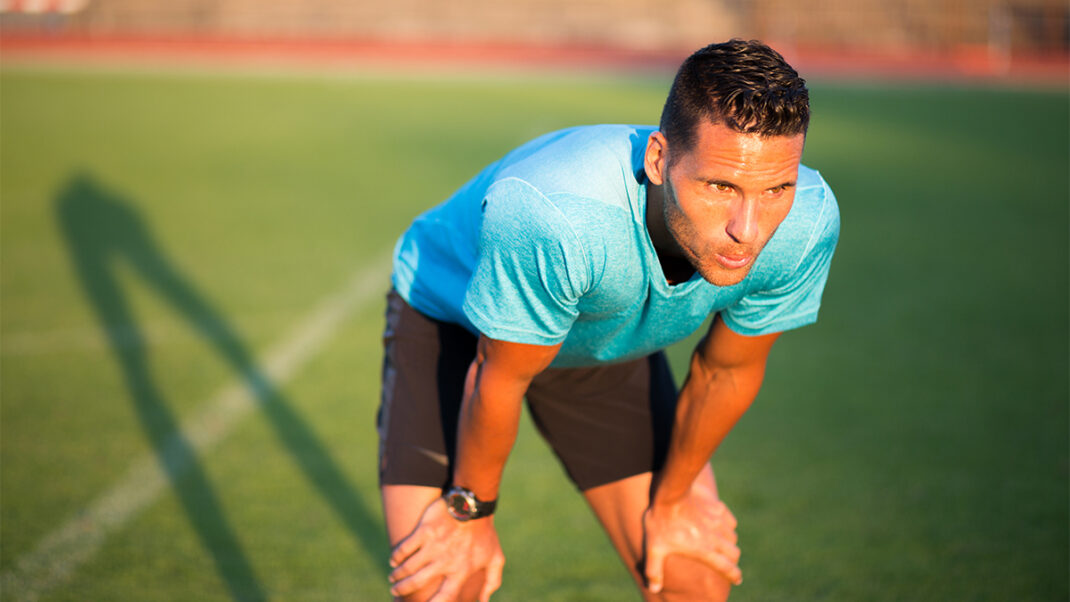A New Wave of Water Fitness Classes
It may be the middle of winter in many areas, but water fitness classes are creating a splash in clubs everywhere. In fact, today’s programming schedules are awash with innovative aquatic offerings—taught in both shallow and deep water—that appeal to a wide range of clients, such as kids, pregnant/postpartum women, athletes, older adults and people with special medical needs.
Immersing Different Populations
Traditionally, many aquatic fitness classes have targeted older adults, who greatly benefit from the water’s natural resistance and supportive buoyancy. But now a sea change is occurring in the member demographics attracted to this form of exercise.
Phil Arney, co-owner of Youth Fitness Solutions Inc. in Irvine, California, specializes in water fitness for kids. Geared to children ages 7 to 14, his classes are designed to “improve swimming strength and water confidence, but mainly to [be] fun,” he says. To increase the fun factor, he tries to come up with kid-friendly class names, such as “Splish and Splash” and “Duck and Dive.”
Sandra Eberlein, an aquatic fitness instructor in Berlin and Charlottenburg, Germany, has created a whole roster of water classes that appeal to clients of all ages and backgrounds, including older adults, pre/postnatal women and novice exercisers. Understanding that a single format couldn’t meet everyone’s needs, Eberlein developed a different class to meet each demographic’s specific fitness goals. For example, “Aqua Fitness Prenatal” is designed to limit pregnancy-related discomfort and strengthen the body in preparation for childbirth. After delivery, “Aqua Fitness Postnatal” emphasizes recovery of the pelvic floor muscles. Eberlein also offers “Power Aqua Fitness,” which focuses on muscle strengthening, and “Aqua Fitness for Beginners,” which teaches basic water movements.
Athletes wishing to perfect their tennis game are the target demographic of Bethany Diamond, a personal trainer and group fitness instructor who serves on IDEA’s water fitness committee. “The [majority] of my participants are teenagers, but anyone interested in improving their performance on the tennis court can and should do this workout,” she says. “The goal is to improve control, balance, speed and ability on the court.” Diamond teaches her “Tennis Training Drills in the Water” class at the Chattahoochee Plantation tennis courts in Marietta, Georgia, the training camp for the Universal Tennis Academy.
Saturating the Market
In addition to teaching community aquatic fitness classes for all ages and levels, Debbie Miles-Dutton offers a for-credit water fitness class for college students at the University of California at Santa Barbara. “The goal is to maintain and improve cardiovascular and muscle endurance, coordination, flexibility and muscular strength in healthy young adults,” she says.
Shirley Archer, chair of IDEA’s water fitness committee, trains fitness instructors in several aquatic formats that incorporate a mind-body component; she also opens these master classes to members at the Family YMCA in Palo Alto, California. Her “Liquid Magic” class includes “arthritis-friendly”moves in keeping with guidelines established by the Arthritis Foundation. “However, the workout is suitable for all levels, since it includes dynamic range of motion [ROM], stretching, balance and proprioception training, muscle conditioning and relaxation,” she says. “It is designed to be taught in warmer-temperature pools (85 degrees Fahrenheit, or 29 degrees Celsius, at a minimum) and can even be taught in a hydrotherapy pool.”
Archer also teaches a format called “Warrior Warmdowns,” which uses water training as a tool for active recovery. “This workout features sports moves done in new ways, such as with both eyes closed, to improve proprioception and to train balance and stabilizer muscles. I use dynamic intervals for thermal regulation and large ROM exercises for dynamic flexibility training.” Archer complements the physical experience with creative visual-imagery cues to encourage participants to discover their “inner warrior spirit.”
A Deluge of
Special Equipment
Today’s water fitness instructors have a lot of specialized equipment to entice and motivate their participants. Standard choices include pool sticks, noodles, water steps, swim boards, paddles, aqua mats, tether sets, booties and flotation belts.
Some instructors tailor the special aquatic equipment they use to the specific class they are teaching. For example, Steph Toogood, a self-employed water fitness instructor in the United Kingdom, uses webbed gloves, noodles and buoyant barbells in her “AQUACARE” class, which targets older adults in a shallow-water format; she also uses aquatic resistance equipment for her “HYDROTONE” class, a core stability class taught in deep water.
Instructors who work with children often rely on kid-friendly apparatus. For example, Arney uses “hoppy balls, floats, inflatables, balls, and sinking and floating hoops and animal shapes.”
Several sources cited a new kind of water equipment called the “Hydrorider.” According to Heidi Hill, Hydrorider North American sales and marketing director, this unique aquatic indoor stationary bike is made out of stainless steel, so it does not rust. “The resistance is determined by three paddle wheels that are adjusted before you enter the water. Each of the three adjustments increases the resistance by 25 percent. The longer the paddle is pulled out, the greater the surface volume of water taken in; hence, the greater the resistance.” Hill says that while the Hydorider will appeal to any population, it is especially helpful for people with arthritis who cannot use conventional indoor bikes. Archer, also a Hydrorider trainer, says older adults love this form of exercise. “It brings back fun memories of when they were young and rode [conventional] bicycles. Now, they can [cycle] in the comfort of the water with no fear of falling.” According to Hill, Hydorider classes are currently offered at CRUNCH Fitness in New York City and Atlanta, and at Life Time Fitness clubs, a large chain in the Midwest.
Staying Afloat
Despite Challenges
While water fitness instructors are uniformly enthusiastic about their craft, they do encounter some challenges. “The biggest challenge is the belief that water fitness is only for the infirm or elderly,” says Diamond.
Hill, on the other hand, says that Hydrorider instructors have to appeal to both “hard-core indoor cyclists and seniors” in the same class. “This is why the instructors need to be well trained and well-read in both the science behind water physics and the science [behind] sport cycling,” she says.
Being able to meet the needs and abilities of different participants is a challenge faced by all water fitness instructors, even those targeting a particular age group. To ensure the safety of his young charges, Arney requires that all the children in his water fitness classes know how to swim.
Several instructors point to a general lack of pool space, especially during peak hours or the “in season.” For those who teach in a fitness facility without a pool, space can be an even greater challenge. One way to get around this is to develop a relationship with a nearby off-site venue, such as the tennis club where Diamond teaches. Toogood offers her water fitness classes at two different facilities, the Medina Leisure Centre in Newport and the United Kingdom Sailing Academy in Cowes. Arney also treks to different local clubs to teach his kids’ classes.
Even when pool space is readily available, the environment can exact a toll, especially for those who teach outdoors. “We are exposed to the elements all year round: sun, wind, fog, rain, even hail at times,” says Miles-Dutton. “This can be very challenging for the students, but especially for the instructor who remains on deck teaching to a large class of 30 to 40 participants.” Water temperature fluctuations are also an issue for instructors and attendees, says Toogood, as is creating enough pool space so that each participant can exercise in the correct depth.
More and more water fitness instructors are starting to integrate cutting-edge land-based formats, such as yoga and martial arts, into their aqua classes. Although this approach draws in new participants, it can also present problems for instructors. “Achieving a smooth reception by members to alternative or unique classes is a special challenge,” says Archer. “If an instructor is at all insecure, the group will sense it and also be more hesitant to jump in the water (so to speak!). However, [this] can be overcome by qualified and confident instruction.”
Before You Dive In
Qualified instructors appear to be the key to a successful water fitness program. Facilities should look for instructors who are “well educated and trained in designing a water-specific program,” says Miles-
Dutton. “Build your program around the needs of the majority of participants, as well as the size, location, depth and shape of your pool. If there will not be a lifeguard on duty, invest your time in a water safety training course (check your local Red Cross agency) and provide safety/first-aid equipment appropriate for the size and depth of your pool and the number of participants you expect. Be sure to offer program kickoffs and introductions for new students. Once you have your core participants, word of mouth will be your best advertisement. Be prepared to grow, change, and try new formats. And get to know the pool operators at your facility, as they will be critical [in determining] temperature, pool sanitation and participant needs.”
For those contemplating a new career as a water fitness instructor, Toogood advises remaining aware of industry trends. “Seek out a quality certification and training program,” she says. “And don’t be afraid to ask for feedback from your students to make sure you are meeting their requirements and expectations.”
“Follow your passion,” advises Archer. “If you are not having fun as an instructor, your class won’t have fun either. If you are really enthusiastic about something, your enthusiasm will rub off on others.”





